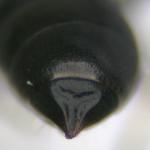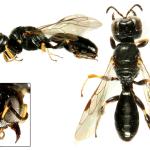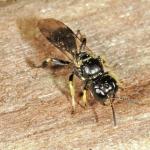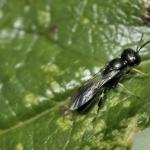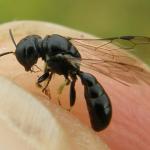Crossocerus punctata ŠNOFLAK,1948; Crossocerus snoflaki ZAVADIL,1948; Crossocerus vicinus DAHLBOM,1842
A small black solitary wasp. Identification keys are given in Yeo & Corbet (1995), Lomholdt (1984) and Richards (1980).When using Yeo & Corbet (1995) or Richards (1980), it should be noted that Crossocerus congener (Dahlbom) has recently been added to the British species list. C. congener is very similar in appearance to C. podagricus but has only been recorded on a very few occasions. Critical determinations for C. podagricus are best made using Lomholdt (1984).
A common species, recorded throughout much of England and Wales.
Overseas recorded from Scandanavia, across much of Europe to Central Asia and Japan. Doubtfully reported from northern Africa.
This species is not regarded as scarce or threatened.
Found in a wide range of habitats.
Recorded from May to early September.
Nest burrows are stocked with a range of small Diptera from various families, e.g. Chironomidae, Ceratopogonidae, Sciaridae and Scatophagidae (Lomholdt 1984). Other fly families are listed in Bitsch & Leclerq (1993).
Nests in cavities in dead wood and may make use of old beetle borings.
Males may be found swarming around small bushes or stands of tall herbaceous plants such as hogweed or wild parsnip in sunny situations. Females have been noted nectaring or hunting for prey at the flowers of hogweed, wild parsnip and other tall umbellifers (M N Smith, pers. obs.).
None recorded.
2009


